Michael Ahrens describes the search for environmental indicators that can highlight problems for kai moana.
PDF of this article (472 KB)
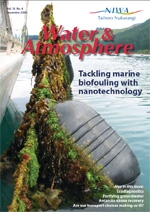
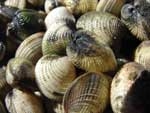

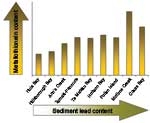

We’ve all heard the expression “happy as a clam” *, but how happy can a clam be, especially one living in a contaminated urban estuary? While it seems silly to attempt to measure the happiness of a clam, the larger topic of shellfish health – and the health of their surroundings – is an important environmental issue. We all want healthy estuaries and kai moana, but how do you measure the health of an estuary and its inhabitants? And what indicators distinguish healthy estuaries from degraded ones? Answering these questions is the goal of ‘Estuarine Ecodiagnostics’, a four-year research programme involving scientists from NIWA and the University of Waikato.
How do we measure ecological health?
Just as there’s no single indicator that summarises a person’s health, there’s no single ecological measure that conveniently sums up the health of an entire estuary. Instead we must piece together the diagnosis from different streams of evidence. For example, we might measure the concentrations of certain contaminants such as trace metals or hydrocarbons in the water or sediment for a picture of pollution levels. Similarly, we can analyse tissues of organisms that live there for presumed contaminants. We might, furthermore, assess the presence or absence or count the number of organisms or species inhabiting a certain site. We can then compare these findings with benchmark values to rank the relative health of a particular estuary.
Ecological and chemical monitoring are very sensitive and useful tools for describing trends in estuarine health over time. But what if we want to find exactly what is stressing organisms? For example, how can we determine whether the generally lower numbers and smaller size of shellfish observed in urban estuaries are the result of chemical contamination or, rather, other environmental factors, such as sedimentation, over-harvesting, or habitat destruction?
Unlike the health of an individual person, ecological health spans many time and size scales, ranging from individual cells and individual organisms to populations and species assemblages (or communities). Each biological level tells us something about the health in an estuary, but it doesn’t tell us everything. The greater the scale we look at, for example, the community level, the more significant the effect, but the more difficult to assign a single cause because we’re seeing the integration of many causes over time. At the cellular end of the scale, there’s generally a clearer link and shorter time lag between cause and effect; however, the environmental significance is less clear cut and the effect may also be fleeting.
The best approach for getting a ‘holistic’ picture of estuarine health is to measure a variety of indicators at every scale – from single organism through to community – and combine them into an integrated risk assessment. This approach is known as ecodiagnostics. As part of ‘Estuarine Ecodiagnostics’ we’re exploring the single organism end of the scale and developing tools to measure cellular and organism health.
Happy as a cockle?
To get a more instantaneous snapshot of the health of bivalves living in an estuary, we can measure their ’vitality’ using so-called biomarkers. In an ecological context, biomarkers are broadly defined as biological responses to exposure to stressors acting at the sub-organism, physiological, or behavioural level.They encompass molecular, cellular, genetic, immunological, and physiological measures and can be seen as performance or condition indicators of how well an individual organism is doing. Measuring biomarkers in bivalves is analogous to a physician running a battery of tests on a human patient to find out more about his/her condition. Summarising the test results of many patients gives us a very detailed picture about the health of a population, assuming we tested a representative subsample. The power of biomarkers lies in their ability to describe the short-term condition of an individual and to measure sublethal responses to stress; sublethal response means the organism is damaged, but not necessarily killed, by the stress. In other words, with biomarkers we can detect exposure to enviromental stress before it becomes lethal.
Biomarkers of metal contamination
For the ‘Estuarine Ecodiagnostics’ project, scientists were interested in whether there is a characteristic biomarker profile for organisms experiencing different types of environmental stress, for example from metal or hydrocarbon pollution. Many urban estuaries are under stress from metal inputs from land runoff (for example, zinc from roofs and cars), and there is a pressing need to determine reliable thresholds for metal contamination and to establish which metals are causing trouble.
A number of metals are essential components of many proteins and enzymes; the element zinc, for example, is an essential component of over 300 known proteins. However, excessive amounts of these and other non-essential metals (such as lead and cadmium) are known to disrupt the normal biochemical functioning of cells. Metal toxicity can act on organisms by a variety of mechanisms, including by short-circuiting chemical reactions in the cell or by replacing other metals in enzymes and thereby rendering them inactive. Excessive metal concentrations can also set off side-reactions that produce damaging free radicals, peroxides, or hydroxylions. These can lead to premature aging of tissues and molecules or genetic mutations, incurring additional energetic cost to the organism which has to repair the damage.
To minimise damage and make repairs, the cell has a variety of tools in its kit. These either help diminish the amount of toxin inside the cell (by affecting uptake or excretion), or they repair damage to cell components, such as proteins, DNA, or lipid membranes. For example, a protein called metallothionein is very effective in scooping up free metal ions inside cells,and a number of enzymes and vitamins capture free radicals and convert them to water or other harmless by-products. The bottom line is that it’s sensible for an organism to regulate excessive metal concentrations in order to minimise harmful effects.
Dealing with stress: regulate, conform, or perish
Homeostasis is the capacity of living organisms to regulate their internal or external environment so as to maintain a stable, constant condition. Too much change is usually harmful. While some species can tolerate more change than others, any given species will maintain its internal environment and function within a ‘healthy’ range, using a combination of conforming and regulation. Similarly, biomarkers can be expected to fluctuate within a narrow healthy range.
Biomarkers in cockles
To investigate subtle, adverse responses of shellfish to environmental contaminants such a trace metals and organic pollutants, we’ve analysed a variety of biomarkers in cockles. Our suite of biomarkers included several stress proteins (for example, metallothionein) and antioxidant defence enzymes, as well as physiological characteristics of shellfish vigour, such as respiration rate, shell thickness, and resistance to opening. We also measured the degree of genetic damage.
We chose bivalves because of their high abundance and their influential role in sandflat communities as well as their value as a kai moana species. We collected cockles from a number of intertidal sandflats around Auckland which differed in their degree of urbanisation, ranging from pristine estuaries to ones strongly affected by urban activities. So we could rank the different estuaries of origin according to their degree of contamination, we collected sediments alongside the cockles and analysed them for a variety of trace metals, including zinc, copper, lead, and iron.
We found that cockles from sites with high lead concentrations in sediments tended to have elevated metallothionein concentrations in their tissues. Similarly, genetic damage in cockles was strongly related to the concentration of zinc and polycyclic aromatic hydrocarbons (PAHs) in nearby sediments. Our results show that cockle metallothionein levels and genetic damage can be used as a biomarker of exposure to sediment metal contamination. We also found that levels of several antioxidant enzymes were lower in cockles from more metal-contaminated sites – and this difference was consistent over the year.
Biomarkers of chemical contamination
In addition to studying responses to metal contamination, we’ve also looked for biomarkers that may reveal sublethal stress due to other types of chemical contamination, including hydrocarbons and other organic chemicals. For example, we recently discovered that cockles collected from sandflats close to sewage outfalls have thinner shells and weaker adductor muscles (for closing the shell). While we are still exploring the causes, we have found that levels of the enzyme carbonic anhydrase, involved in shell calcification, are significantly depressed at these sites. It appears plausible (though yet unproven) that there are certain compounds present in treated sewage effluent that affect shellfish calcification. One hypothesis we are currently exploring is that the thinner shells are due to certain organophosphate pesticides used for mosquito control in sewage treatment ponds, which are known to affect carbonic anhydrase activity and calcification.
Biomarkers offer a valuable layer of information for integrated ecological health assessments. They generally correspond more specifically and rapidly to environmental change compared to responses seen at the population and community level, which enables scientists to make more detailed inferences about causes and observed effects. Next to biomarkers of contamination, we are also exploring biomarkers of exposure to other environmental stressors, such as elevated temperature. With rapid advances in biochemistry and molecular biology, biomarkers are set to make their mark in coming years.
* This saying appears to have originated in the United States in the mid 1800s, and makes more sense in the full version, now rarely heard: ”as happy as a clam at high water”.
Helping local communities to assess kai moana health
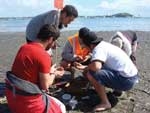
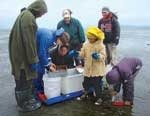
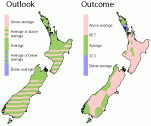
In the field with local communities.
To promote community awareness of the health of local estuaries and shellfish resources, NIWA and the Auckland Regional Council (ARC) have teamed up to conduct shellfish surveys with local community groups. The day-long surveys involve running transect lines from low to high tide marks and counting the number of animals found in a defined area of sediment at fixed intervals along the lines. We use a field tool called a sampling quadrat, essentially a frame 25 cm on each side, to define the sample area, and we space the samples 10–50 m apart, depending on the width of the intertidal area. In addition to identifying and counting the organisms found within each quadrat, the surveyors also measure the size of any cockles and pipis.
The format for these surveys was developed by the Hauraki Gulf Forum, made up of community groups, ARC, Department of Conservation, and Ministry for the Environment.
In the NIWA-led surveys, we also collect samples of sediment, water, and shellfish tissue for later analysis for nutrients, various contaminants, and a number of biomarkers such as metallothioneins and antioxidant enzymes. This provides a cause-and-effect link to explain the observed patterns of animal distribution.
The surveys provide an informative hands-on learning exercise for youth groups and offer a glimpse of what it’s like to work as a marine scientist. So far, we’ve conducted surveys with two Maori youth groups from Manukau Harbour and Hauraki Gulf.
If you’re interested in organising a shellfish survey in your estuary, contact: Dr Mike Townsend, 0-7-856 1789, [email protected] Dr Sue Clearwater, 0-7-859 1835, [email protected]
Biomarkers make their mark
- Ecodiagnostics investigates exposure to enviromental stress over a range of biological scales.
- Biomarkers are measurable responses at the biochemical and organism level.
- Scientists are measuring biomarkers in cockles to detect exposure to chemical and metal contamination in estuaries.
Dr Michael Ahrens is an ecotoxicologist based at NIWA in Hamilton. He thanks David Bremner and Aimee Gibson (NIWA) for their contribution in the lab and Kowhai Olsen (Makaurau Marae) and Richelle Kahui-McConnell and Liz Ross (ARC) for coordinating the community surveys. ‘Estuarine Ecodiagnostics‘ is funded by the Foundation for Research, Science and Technology.
Teachers’ resource for NCEA Achievement Standards or Unit Standards: Biology Level 2 US6308, US6312, AS90461, AS90769, Level 3 US8933 Environmental Sustainability Level 2 AS90811
